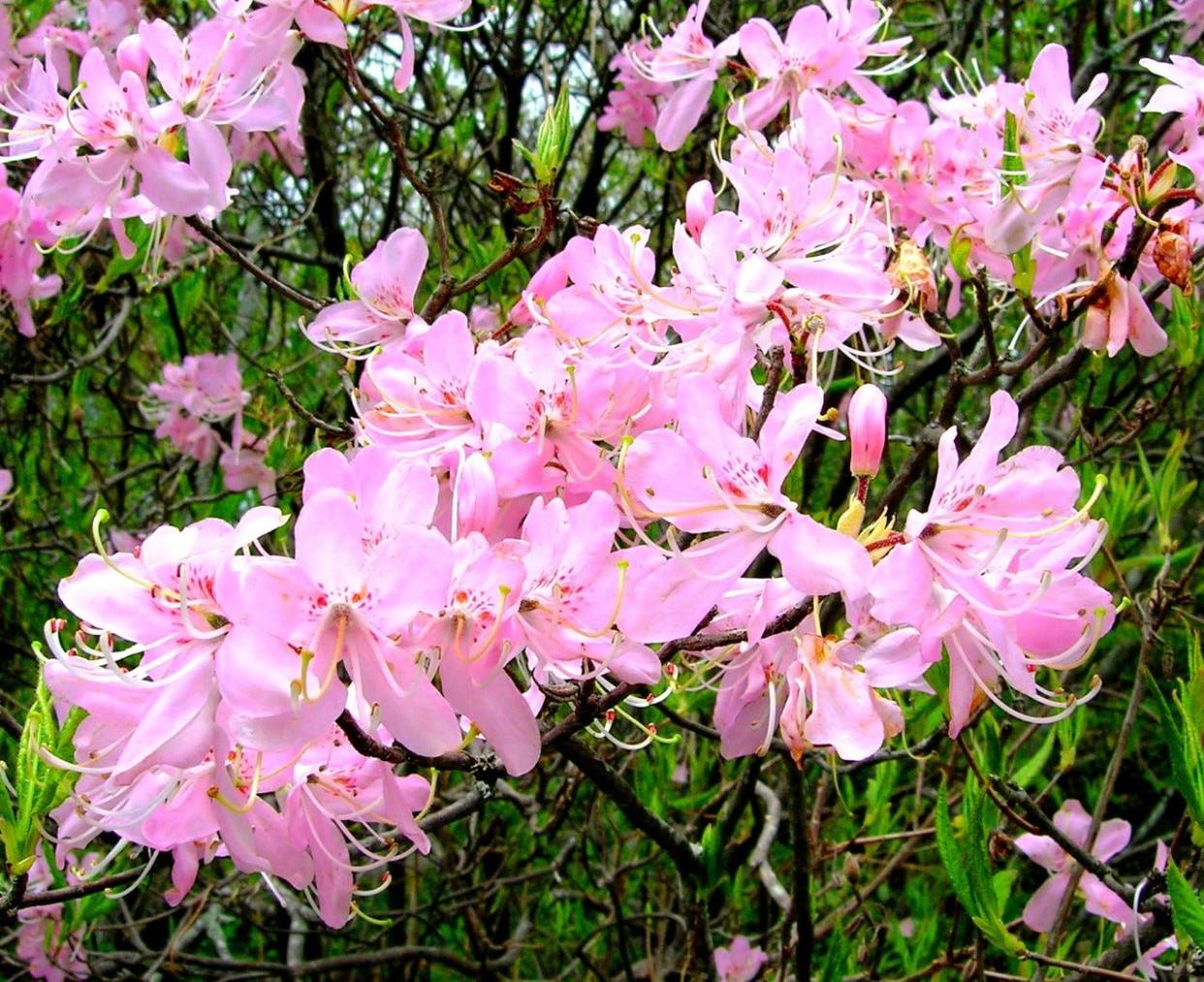Pinkshell azalea has spectacular flowers, is easy to grow | Mystery Plant

Ah, the Blue Ridge Parkway: truly one of our national treasures. An incredible amount of scenery and natural history abounds all along its length, and all year long.
Although there is no “wrong” time to be on the Parkway — unless it’s snowing heavily — many people say that late spring is the best, mostly because of the amazing variety of blooming plants to see. This shrub is one of those plants.
Interestingly, Pinkshell azalea, Rhododendron vaseyi, a deciduous shrub, which can get to be 12-15 feet tall, is absolutely native only to North Carolina, and in only a few counties in the mountains. (My fellow South Carolinians will be disappointed to know that it barely eludes us, and only by a few miles! On the other hand, we have some plants that don’t quite make it into North Carolina.)
It is a plant fond of deeply shaded slopes, at elevations above 3,000 feet, and it is commonly seen in spots along the Parkway, just off the highway.
Its flowers are spectacular. Each one flares open widely, about 2 inches across. Five petals are fused together, just barely, at the base. The three upper petals form a sort of upturned lip, while the lower two petals provide a lower lip.
The petals vary from white to red, but are probably most often a delicate, pale shade of pink, often with the uppermost spotted red or yellow. Five (sometimes seven) stamens arise around the central pistil.
Despite the charming appearance of these blossoms, there is no scent to speak of — but who’s complaining? After blooming, each flower produces a short, woody capsule, eventually splitting open and dropping its tiny seeds.
This plant is easily grown in gardens, and is available from well-stocked nurseries, and there are several cultivars of it. It is adaptable to many sites, but is probably happiest in partial shade and at least moderately moist soils.
In the fall, its foliage turns an attractive red. Careful gardeners seeking this plant will make sure that they select only plants certified not to be collected from the wild.
This plant was discovered in 1878 in Jackson County, North Carolina, by George Richard Vasey, whose father was the first botanist for the U.S. Department of Agriculture.
The younger Vasey became a botanist as well, traveling widely, and sharing his dried herbarium specimens with a number of colleagues, including Asa Gray, the famous Harvard University botanist.
Gray, after studying his specimen, realized that this shrub (which many readers of this column will recognize as a sort of native azalea) was a new species, and so he coined a scientific name that honors its discoverer.
The specimen available to Gray is still at Harvard, and is what we botanists refer to as the “holotype” of the new species name.

John Nelson is the retired curator of the A.C. Moore Herbarium at the University of South Carolina in Columbia, S.C. As a public service, the Herbarium offers free plant identifications. For more information, visit herbarium.org or email johnbnelson@sc.rr.com.
This article originally appeared on Tallahassee Democrat: Mystery Plant: Pinkshell azalea has striking flowers, is easy to grow

